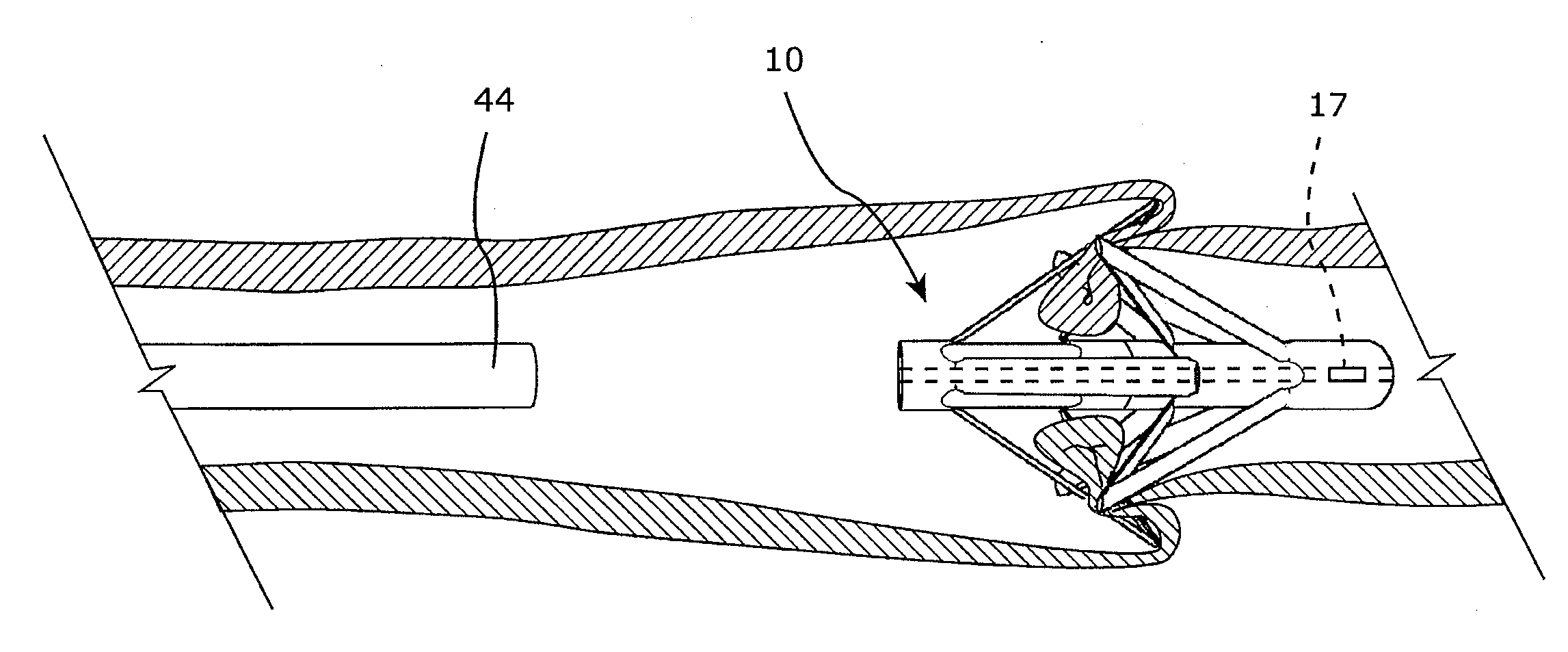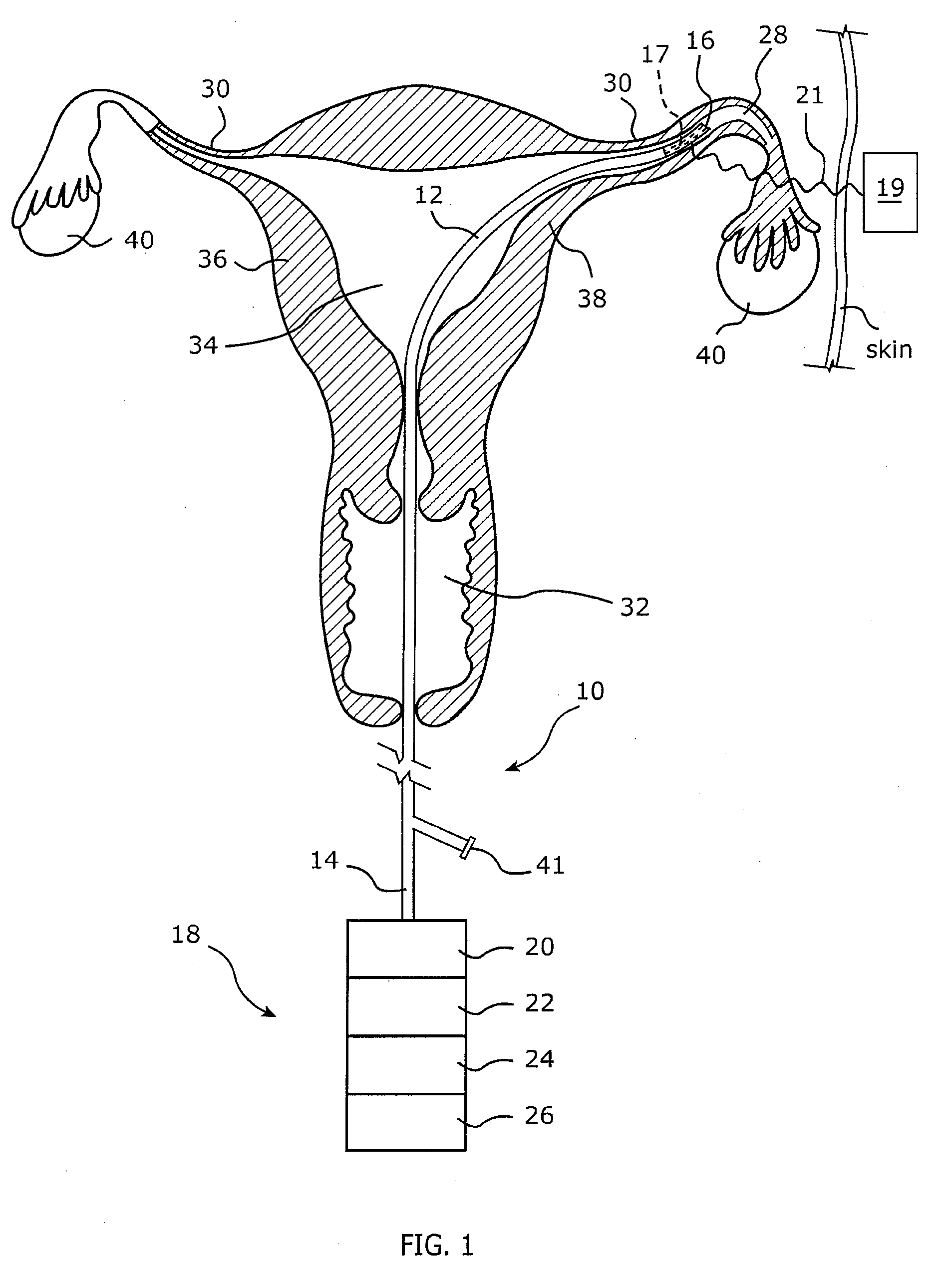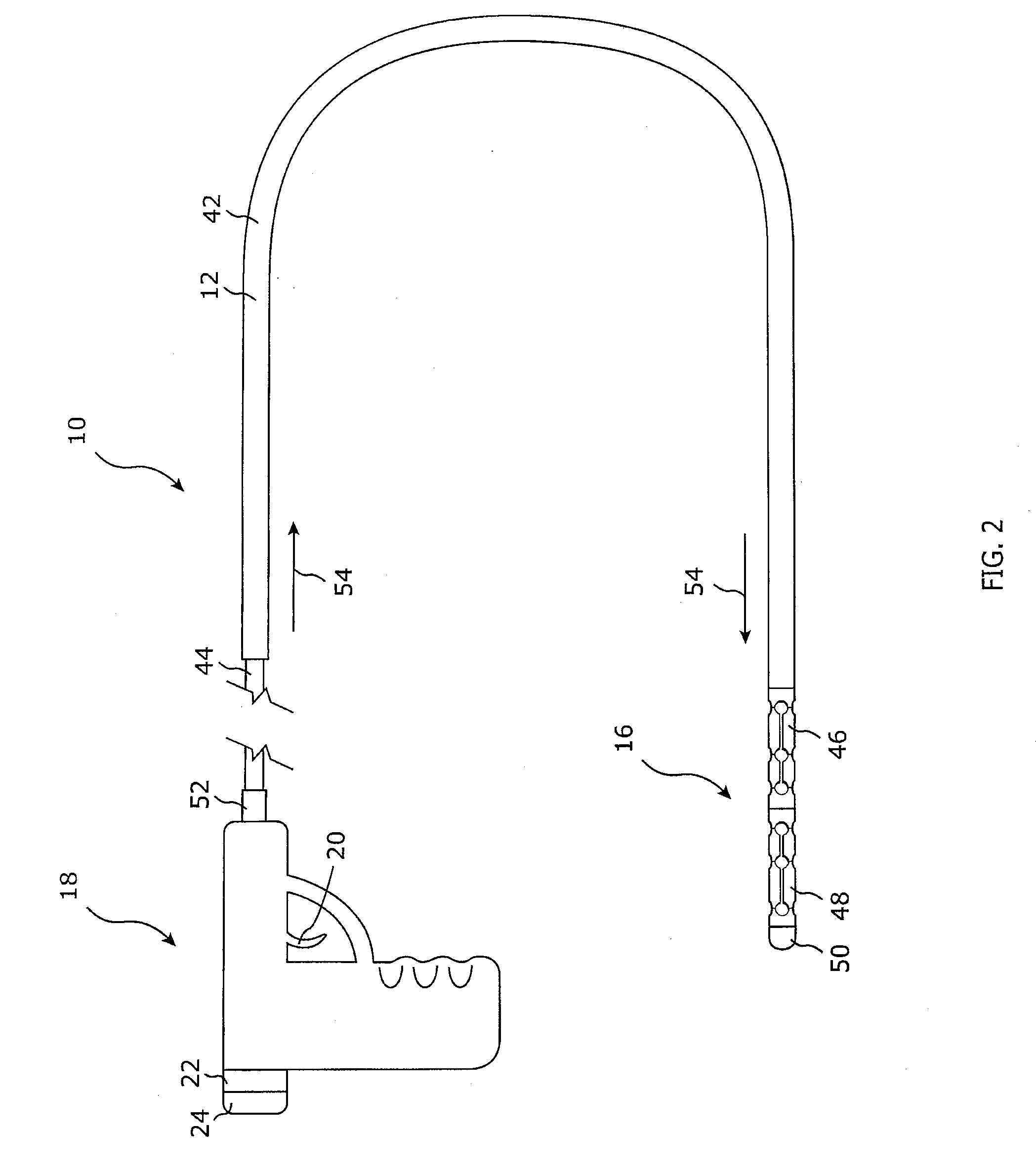Tubal ligation
a technology of ligation and tubule, applied in the field of tissue occlusion systems and methods, can solve the problems of unsatisfactory recovery time and discomfort, unreliable or impermanent blockage, and relatively difficult to achieve successfully
- Summary
- Abstract
- Description
- Claims
- Application Information
AI Technical Summary
Benefits of technology
Problems solved by technology
Method used
Image
Examples
Embodiment Construction
[0039]The presently preferred embodiments of the present invention will be best understood by reference to the drawings, wherein like reference numbers indicate identical or functionally similar elements. It will be readily understood that the components of the present invention, as generally described and illustrated in the figures herein, could be arranged and designed in a wide variety of different configurations. Thus, the following more detailed description, as represented in the figures, is not intended to limit the scope of the invention as claimed but is merely representative of presently preferred embodiments of the invention.
[0040]As used throughout this disclosure, the terms “ligate,”“ligating,” and “ligation” refer to the act of blocking or interrupting the continuity of any tube or other fluid flow space whether by binding, annealing, occluding, or other method of interrupting. Further, as used throughout this disclosure, the terms “tube,”“tubes,” or “tubal” refer to an...
PUM
 Login to View More
Login to View More Abstract
Description
Claims
Application Information
 Login to View More
Login to View More - R&D
- Intellectual Property
- Life Sciences
- Materials
- Tech Scout
- Unparalleled Data Quality
- Higher Quality Content
- 60% Fewer Hallucinations
Browse by: Latest US Patents, China's latest patents, Technical Efficacy Thesaurus, Application Domain, Technology Topic, Popular Technical Reports.
© 2025 PatSnap. All rights reserved.Legal|Privacy policy|Modern Slavery Act Transparency Statement|Sitemap|About US| Contact US: help@patsnap.com



